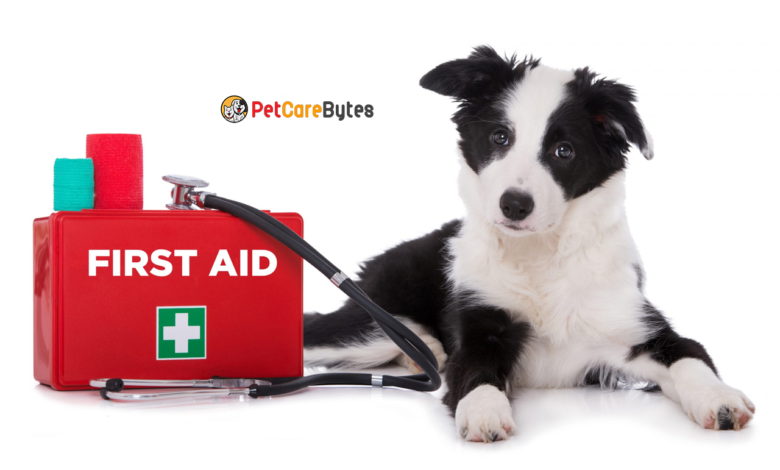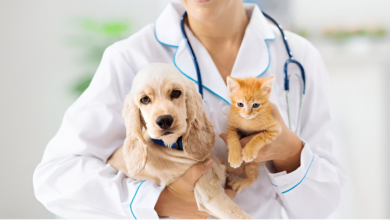
Pet First Aid: How to Give Pets First Aid
Pet owners know that our furry companions can sometimes find themselves in unexpected situations where they might need immediate medical attention. Just like humans, pets can experience accidents or sudden illnesses. Being prepared to administer first aid to your pet can make all the difference in their well-being. In this article, we will explore essential tips and techniques for providing first aid to pets, ensuring their safety and health.
Read More: Complete Cat Health Guide for Every Life Stage
Understanding Pet First Aid

What is Pet First Aid?
Pet first aid involves the immediate and temporary treatment given to animals in case of injury or illness until professional veterinary care can be provided. It’s crucial for pet owners to have a basic understanding of first aid techniques to stabilize their pets’ condition and prevent further harm.
Importance of Pet First Aid
Just like humans, pets are prone to accidents and illnesses. Quick and appropriate first aid can make a significant difference in their survival and recovery. It’s important to remember that while first aid can stabilize a situation, it doesn’t replace proper veterinary care.
Building Your Pet First Aid Kit
Assembling a First Aid Kit
Every responsible pet owner should have a well-stocked first aid kit ready. Your kit should include items such as gauze, adhesive tape, antiseptic wipes, tweezers, scissors, and even a pet thermometer. Familiarize yourself with each item’s purpose and use by consulting with your veterinarian.
Keeping the Kit Updated
Regularly check and update your pet’s first aid kit to ensure that all items are within their expiration dates. Additionally, customize the kit according to your pet’s specific needs. For example, if your pet has allergies, include appropriate medications.
Common Pet First Aid Situations
Treating Cuts and Scrapes
If your pet gets a minor cut or scrape, start by cleaning the area with mild soap and water. Apply an antiseptic ointment and cover it with a sterile bandage. If the wound is deep or bleeding heavily, seek immediate veterinary care.
Dealing with Choking
If your pet is choking, it’s important to remain calm. For smaller pets, you can perform the Heimlich maneuver, while for larger pets, you may need to use modified techniques. If choking persists, consult your vet.
Handling Fractures
In the unfortunate event of a fracture, it’s essential to immobilize the affected area using splints or improvised materials. Avoid putting pressure on the fracture and transport your pet to the vet as soon as possible.
Pet First Aid Do’s and Don’ts

Do: Stay Calm
In any emergency situation, your pet will pick up on your energy. Remaining calm helps keep your pet at ease and makes it easier for you to provide the necessary care.
Don’t: Panic
Panicking can lead to confusion and mishandling of the situation. Remember, you’re your pet’s primary caregiver, and your composed demeanor is reassuring to them.
FAQ’s
- Q: Is it enough to know pet first aid, or should I always consult a vet? Pet first aid is essential for immediate care, but professional veterinary advice is crucial for proper diagnosis and treatment.
- Q: Can I use human first aid supplies on my pet? It’s best to use supplies specifically designed for pets to avoid any potential complications or adverse reactions.
- Q: How often should I update my pet’s first aid kit? Regularly check the expiration dates of items and update the kit accordingly, at least once every six months.
- Q: Are online tutorials reliable for learning pet first aid techniques? While online tutorials can provide basic guidance, it’s recommended to attend certified pet first aid classes for comprehensive and accurate training.
- Q: What’s the most important thing to remember during a pet emergency? Staying calm and composed will help both you and your pet during any emergency situation.
Conclusion
Pet first aid is a skill that every pet owner should have in their arsenal. Being prepared for unexpected emergencies can save your pet’s life and provide them with the best chance of recovery. Remember, while first aid is important, it’s always wise to consult a veterinarian for proper diagnosis and treatment.








One Comment